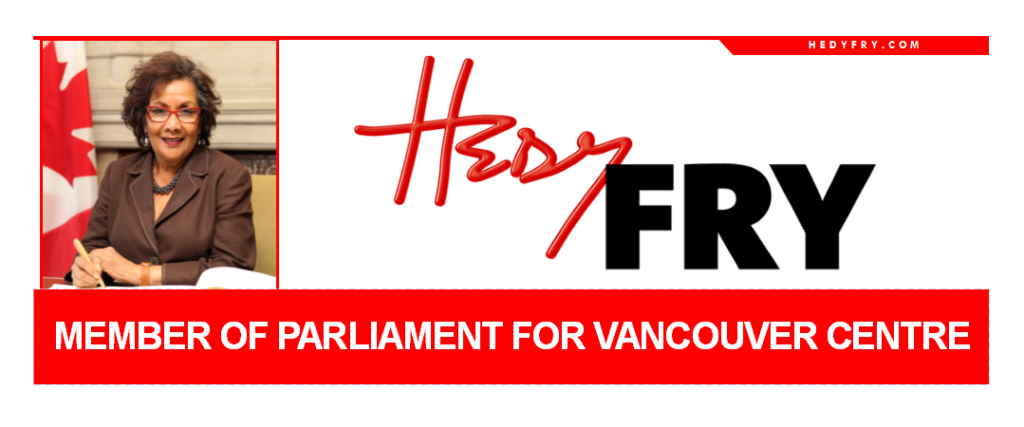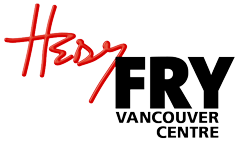
The overdose crisis continues to affect communities and families across Canada. Tragically, we have seen significant increases in overdose deaths and related harms during the COVID-19 pandemic. The Government of Canada continues to support communities as they respond to drug overdoses during the pandemic and beyond.
Today, on behalf of the Honourable Patty Hajdu, Minister of Health, Darren Fisher, Parliamentary Secretary to the Minister of Health, announced nearly $3.5 million to expand the MySafe Society safer supply project. With this investment, MySafe will be able to operate five sites in four cities across Canada. This innovative project offers a new way to provide medication to people living with opioid use disorder as an alternative to the toxic illegal drug supply and to help prevent overdoses.
The MySafe machine resembles an ATM, and after verifying the patient’s identity with a palm scan, provides patients with access to their existing prescriptions for hydromorphone pills. As with other safer supply models funded by Health Canada, the patients are supervised by a healthcare practitioner and connected with important health and social services, including treatment.
Through this innovative model, participants can access a safe supply, an important alternative to lethal street drugs. With a safer alternative being provided through this project, we can reach people living with an opioid use disorder who may face barriers accessing traditional methods of care, and can also prevent opioid overdose from increasingly toxic illegal drugs. Further, the machines support physical distancing measures in place with COVID-19, as accessing the medications does not require in-person contact.
We continue to work in collaboration with all levels of government, partners, stakeholders, people who use drugs and people with lived and living experience and organizations in communities across the country to respond to the COVID-19 pandemic and the overdose crisis.
Quotes
“During the COVID-19 pandemic, we must do more to help people using substances to stay safe. This means using new technology and innovative models, such as the MySafe project, to expand our ability to reach people with opioid use disorder and prevent fatal overdoses. Working with these pioneering organizations is another way we are helping people who are at risk of overdose to find access to care and the treatment they need.”
The Honourable Patty Hajdu
Minister of Health“The overdose crisis continues to have devastating effects on communities, including those in Atlantic Canada. Substance use disorder is a health condition that can be managed and treated if people are provided with services that best meets their needs. Through these innovative projects, we are helping people at risk of overdose in Atlantic Canada access needed medication and supports.”
Darren Fisher
Parliamentary Secretary to the Minister of Health“MySafe is designed to address the drug poisoning crisis head-on. It provides a low barrier, convenient, and secure way to access a safer drug supply for those most at risk of dying from an overdose.”
Dr. Mark Tyndall
Executive Director, MySafe Society
Background:
- The MySafe Project for Low Barrier Access to Oral Hydromorphone to Prevent Fatal Overdoses has a number of safeguards in place to protect patients and prevent illegal diversion of drugs, such as continuous engagement and monitoring of patients by healthcare practitioners. In addition, the machine is tamper-proof and is programmed to only provide a set amount of medication prescribed by a physician to registered patients. MySafe Society has partnered with the British Columbia Centre on Substance Use to conduct an evaluation of its safer supply project.
- Through this funding, MySafe will now operate at five sites: two in Vancouver (British Columbia) and one each in Victoria (British Columbia), Dartmouth (Nova Scotia) and London (Ontario). Each MySafe machine can provide medication to up to 48 people living with opioid use disorder, reaching up to 240 people nationwide.
- Through the Fall Economic Statement 2020, the Government of Canada committed to help Canadians struggling with problematic substance use by providing an additional $66 million over two years. This funding would support community-based organizations responding to substance use issues, including to help them provide frontline services in a COVID-19 context. The MySafe project is one of the projects funded from this commitment.
- During the pandemic, people who use drugs are experiencing increased risks and harms in many communities across the country. In addition to the project announced today, Health Canada has committed $44.2 million in funding for safer supply projects in British Columbia, Ontario, Quebec and New Brunswick to help save lives.
- Troublingly, there are early indications that the illegal drug supply is becoming increasingly toxic in Nova Scotia. In addition, there are reports that the use of dangerous stimulants, like methamphetamines, is on the rise in some parts of Atlantic Canada. As part of its support for Atlantic communities dealing with the overdose crisis, Health Canada is also providing more than $2.4 million over four years to River Stone Recovery Centre for its safer supply project in Fredericton, New Brunswick. This unique project offers a pharmaceutical alternative to toxic, illegal methamphetamine and opioids.
- Early findings from Canadian evidence show that using pharmaceutical medications, such as hydromorphone, as an alternative to highly toxic illegal drugs for people at risk of overdose can help save lives and improve health outcomes. It can also help establish an entry to primary care and treatment for people with substance use disorder.
- The MySafe project is funded through Health Canada’s Substance Use and Addictions Program—a federal grants and contributions program that provides financial support to provinces, territories and non-governmental and Indigenous organizations to strengthen responses to drug and substance use issues in Canada.
Associated Links:
- Helping people who use substances during the COVID-19 pandemic
- Health Canada’s Substance Use and Addictions Program (SUAP)
- Interactive map: A list of SUAP safer supply projects
- Government of Canada invests in new measures to address the opioid crisis and emerging drug threats
- Health Canada Toolkit: COVID-19 and substance use






